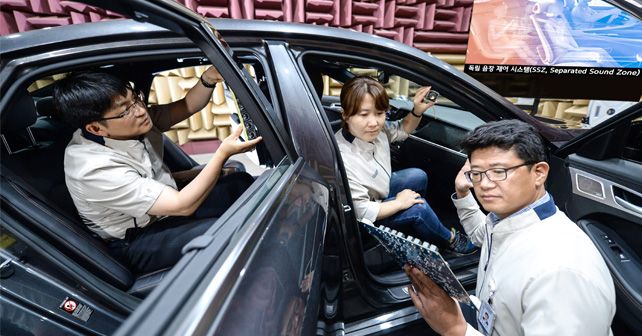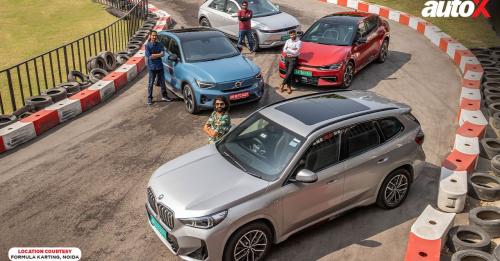
Hyundai’s new tech allows each passenger to enjoy different music at the same time without headphones.
Hyundai Motor Company has developed their next-generation audio system, which allows each passenger to enjoy their personal audio entertainment individually at the same time without the need for headphones.
The system Hyundai has developed for their vehicles can also maintain passenger privacy during phone conversations and can mute unnecessary sounds for passengers.
Hyundai is calling this system Separated Sound Zone (SSZ), which is said to deliver an audio stream tailored to their individual needs, including music, hands-free phone calls and vehicle alerts, whilst maintaining a headphone-free social space where passengers can converse freely.
The SSZ works with the acoustics of the cabin of the car and by tailoring the sound for the driver and individual passengers accordingly. The vehicle uses a number of speakers installed in the vehicle, which feature technology that uses noise-cancelling technology similar to what one would find in modern headphones to reduce audio levels of sound waves to negate the overlap of sounds to each occupant of the vehicle.
Each passenger can connect their smartphone via Bluetooth and listen to their choice of music at the same time without requiring headphones and also not interfere with audio streams of other passengers. Hyundai also claims that hands-free phone calls can be made in isolation to ensure privacy while on the move.
In addition, the SSZ can allow navigation instructions to be audible for the driver while cancelling it out for other occupants of the vehicle to maintain a quiet area for the other passengers. Hyundai claims that this feature would be particularly effective for while driving with a sleeping child on board.
Hyundai has been developing the system since 2014 and is expected to make its way into mass production and installation in vehicles within a year or two.























Write your Comment